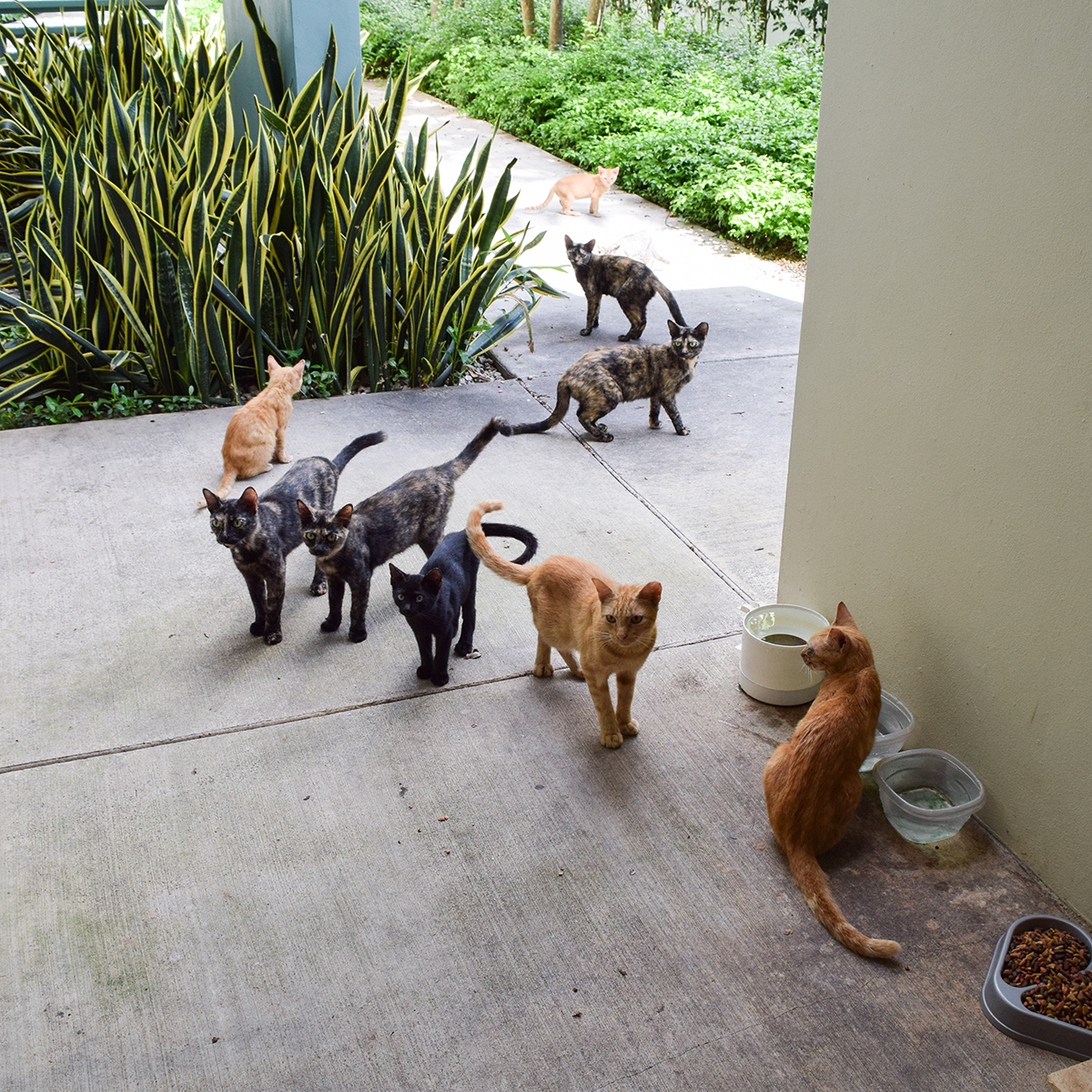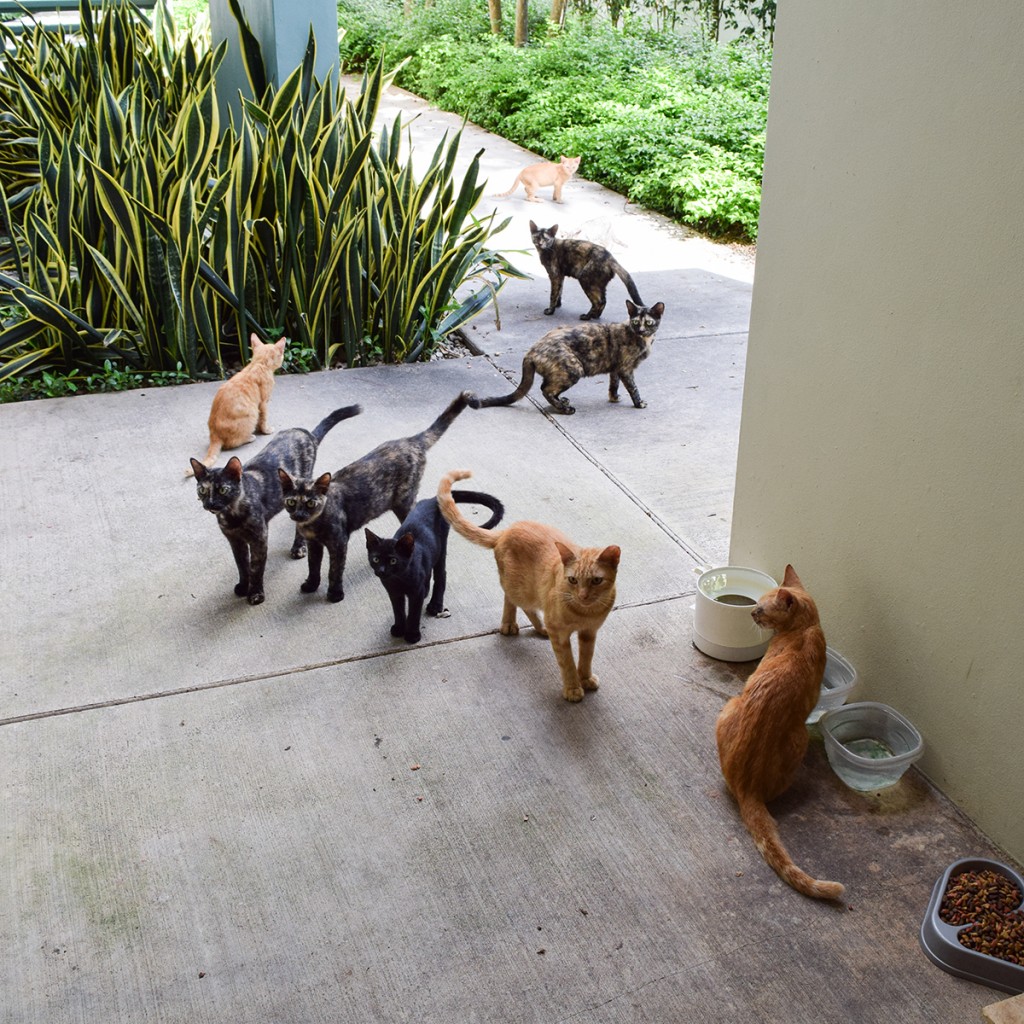

All over campus, there are small communities of feral cats coexisting with students. Library technician Gisela Hernandez has been taking care of 13 feral cats that live around the music library for seven years now – working holidays and weekends – and doesn’t see an end in sight.
The area around the Rathskeller and the Frost School of Music are where the cats that Hernandez puts so much time and effort into protecting are most commonly spotted.
The biggest issue facing the feral cats around Frost is overpopulation. Hernandez has functioned as the main source of population control for the past seven years, she said. She traps new cats by luring them in with food. She then takes them to Miami-Dade Animal Services for the free Trap-Neuter-Return (TNR) program. The county firmly believes that the best way to deal with feral neighborhood cats is to participate in this program.
“The cat is then sterilized and receives its rabies vaccine and feline booster shot. A small portion – one centimeter – of the tip of the left ear is removed to provide visual confirmation that they have been sterilized and Animal Services returns the cat to their community,” according to Miami-Dade Animal Services’ website.
“Population control is still the biggest problem,” Hernandez said. “There are cats around the [law school] parking lot that come out at night that I don’t control.”
However, she worries about who will take care of them when she is not.
“The answer is with the pre-vets,” Hernandez said. “They can help catch the cats, give them the vaccines. It would be good for them to practice.”
She believes the university should be able to set up a program with the pre-veterinary students to allow them to gain experience distributing medicine to the cats.
She said the cats are a well-loved aspect of the music school and removing them would have negative effects on both the animals and the community.
Other faculty members are also actively involved in caring for the cats. Tony Boutté, assistant professor of vocal performance in Frost, has been helping Hernandez take care of the cats for several years. He has aided in getting the cats neutered and wholly agreed that the TNR program is the best bet for the cats at the university.
Boutté described the community of caretakers as a “network.”
“People drop off old and unwanted cats here,” he said. “They’ll also mate early in their lives before we can get to them.”
It is up to students and faculty around Frost to care for the cats. Larisa Soboleva, a piano performance graduate student, has taken a liking to one particular cat Hernandez named George. Although George was originally skeptical about her, Soboleva said they soon formed a connection.
“Now he is my friend and I always go to see him,” she said.
Anyone who is interested in helping with the cats may contact Hernandez at gchernandez@miami.edu.





